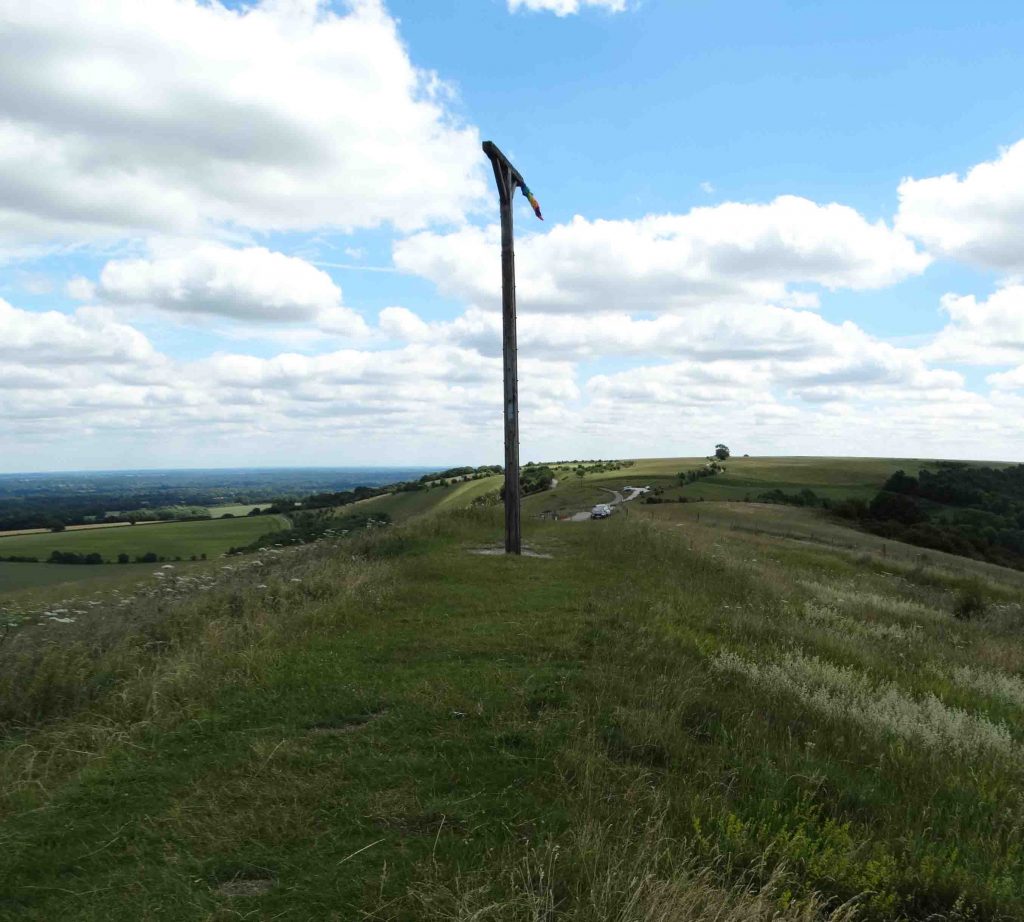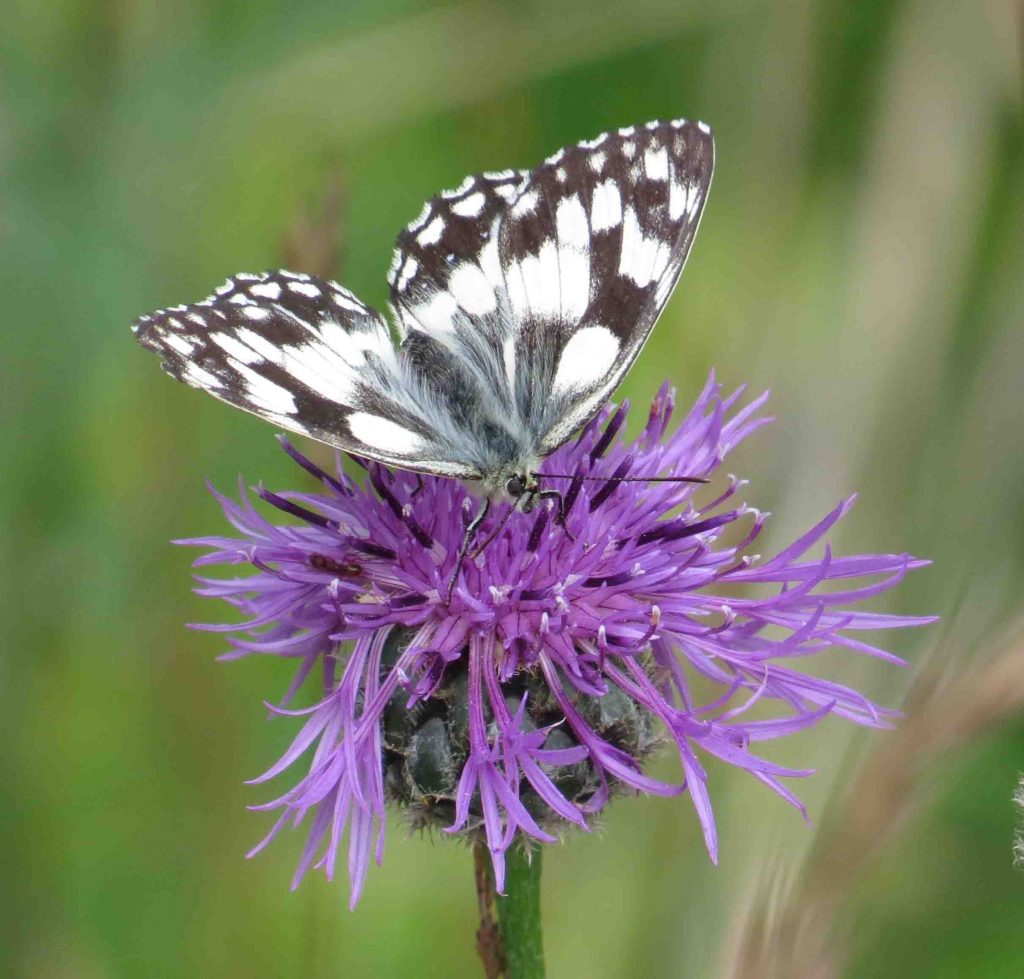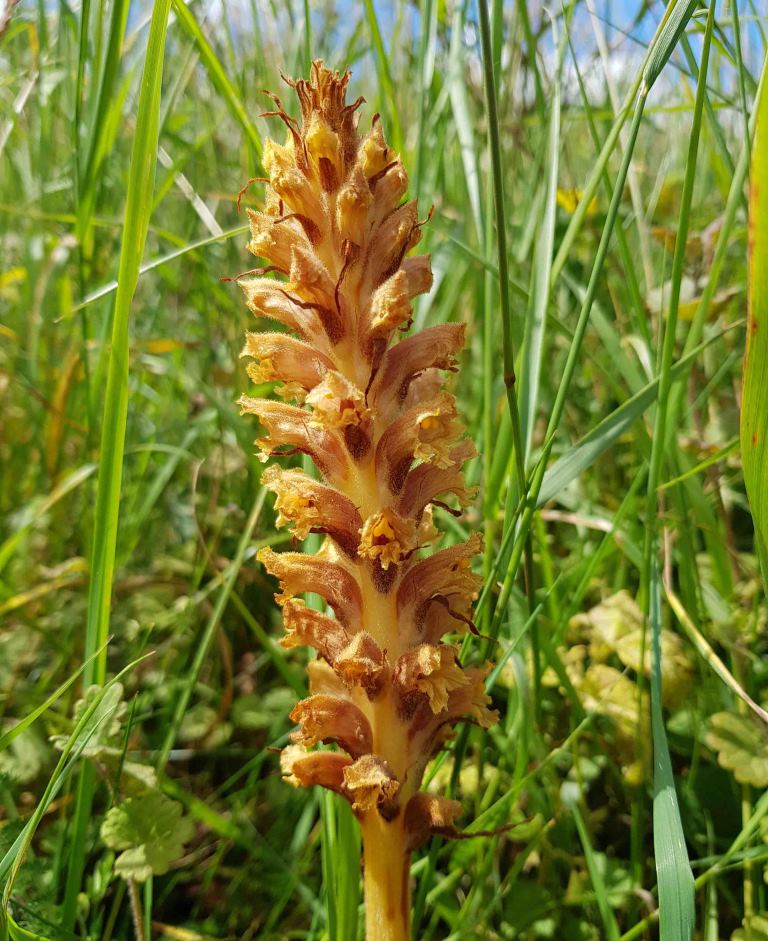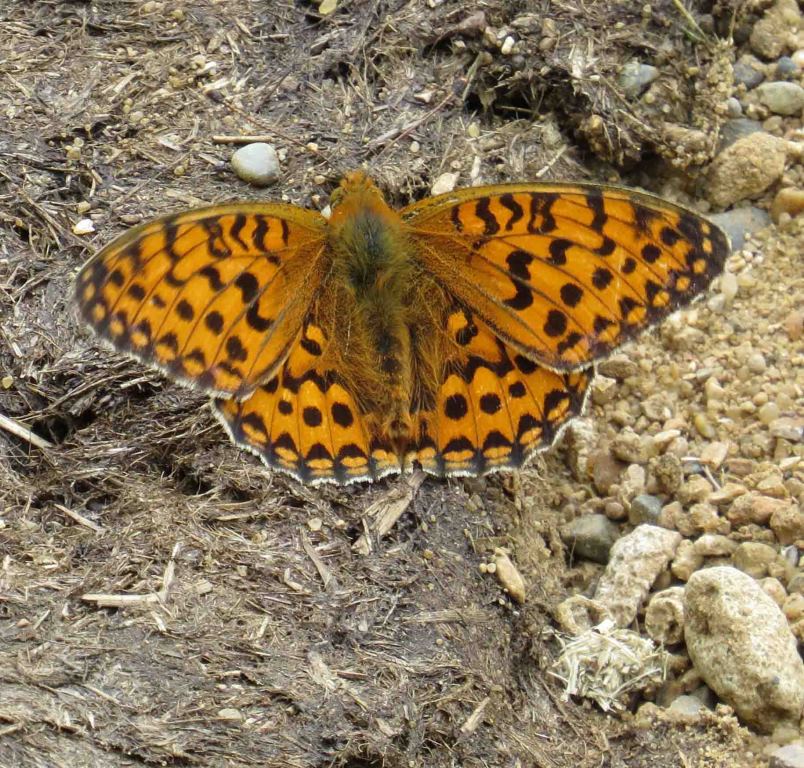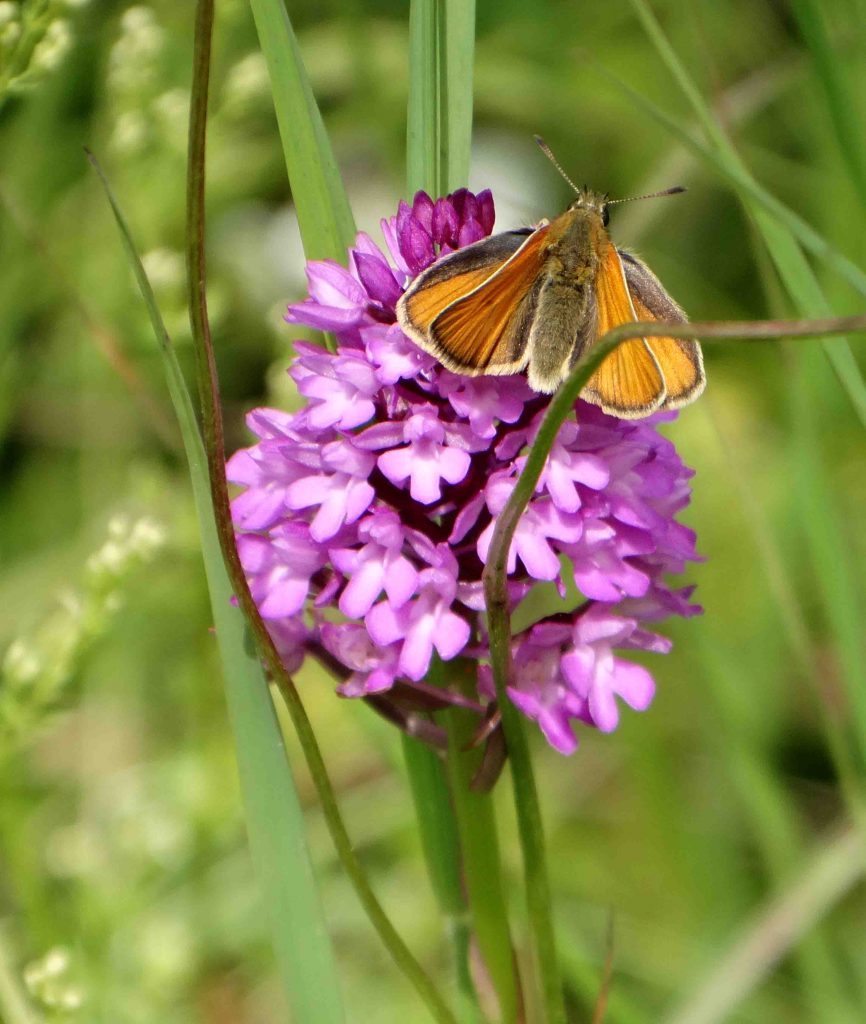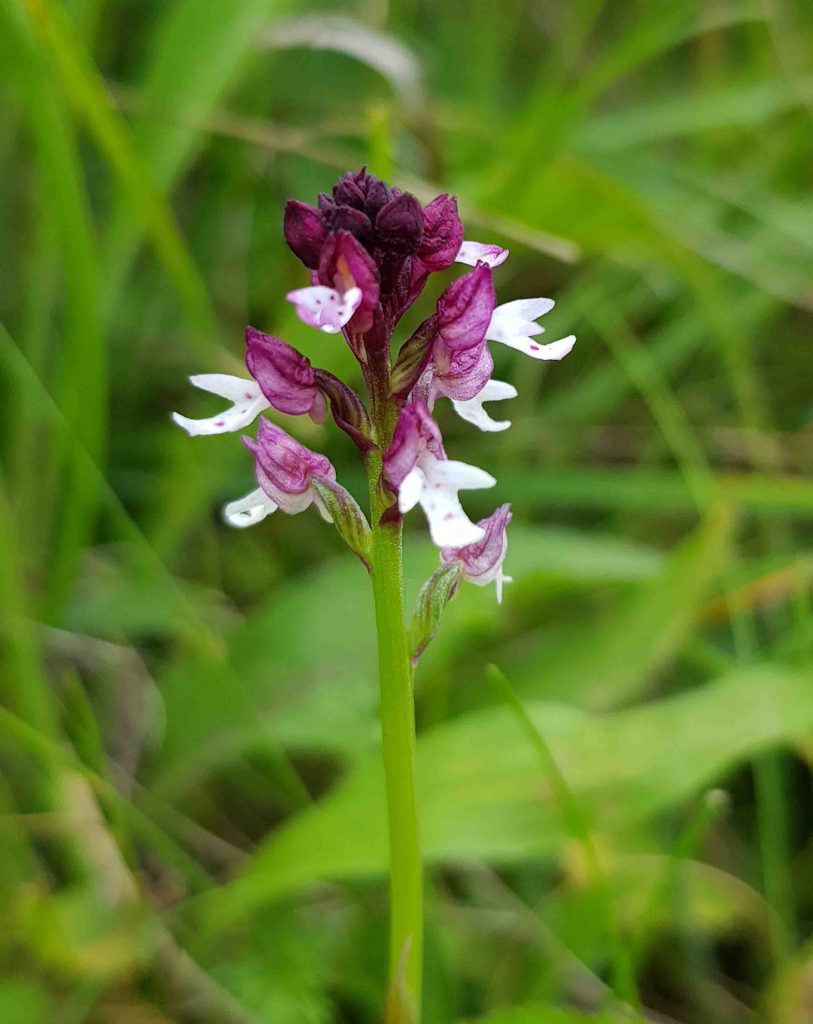Fiona Brown led an all-day circular walk around Walbury Hill and Combe, south of Hungerford, on Saturday 6 July. While the group gathered at the eastern end of Walbury Hill, a Yellowhammer sang from the top of a bush and a Sparrowhawk was seen. It was a sunny day with excellent visibility, with views stretching far across West Berkshire and Wiltshire. The walk started out westwards along the Wayfarers Way. Initially the trackside vegetation was dominated by Hogweed, but it soon led to an area of fine chalk grassland, with plants including Greater Knapweed, Small and Field Scabious, Common Bird’s-foot-trefoil, Kidney Vetch, Wild Thyme, Lady’s Bedstraw, Hoary Plantain, Common Toadflax and Quaking Grass. Butterflies were abundant, including Meadow Brown, Marbled White, Small Heath and Painted Lady. Small orange Skippers darted through the vegetation, but didn’t stay still long enough for positive identification. Spikes of Common Broomrape were growing in the flowery grassland at the western end of Walbury Hill. There was a brief diversion down the road to Combe to admire the bankside vegetation, especially the tall brown spikes of Knapweed Broomrape. There were many orchids too – Common Spotted-orchids, which were a little past their best, Chalk Fragrant-orchids and Pyramidal Orchids. The walk continued past Combe Gibbet and along the first part of the Test Way. Nodding Thistles dotted the grassy field next to the track and many of the flower heads had nectaring Meadow Browns or Marbled Whites. Skylarks sang high above and a singing Linnet was heard. A Whitethroat gave a loud alarm call from deep in a hedge and a loud buzzing sound announced the presence of a passing swarm of bees. Distant views across Hampshire opened up to the south.
Lunch was eaten in the shade of some field margin trees. The calls of Ravens became louder as a circling flock increased in numbers to at least 70 birds. The walk continued along the Test Way, following the edge of Combe Wood. A few Ravens were perched in the tops of the trees. The vegetation below was white with droppings and there were many black feathers, indicating that this must be one of their regular roosting places. The track then dropped down a steep, ungrazed grassy slope with rich chalk vegetation, with plants including Salad Burnet, Squinancywort, Common Valerian and Viper’s Bugloss. Big orange butterflies flew low over the grassland, sometimes fluttering down through the grass. In the warm sunshine, they rarely settled, but a photograph from the pre-walk on a cloudier day confirmed their identity as Dark Green Fritillary. The walk continued down a wide grassy valley with many orchids and clouds of butterflies. Both Large and Essex Skipper butterflies were seen here. At the end of the open area, the route left the Test Way and climbed back up through Combe Wood towards the village. A big orange Silver-washed Fritillary butterfly was seen feeding on bramble blossom in a sunny clearing, and its swooping, gliding flight was very different from the earlier fluttering flight of the Dark Green Fritillaries. A smaller, bright orange Comma butterfly was also seen here. The track led to the 12th century church of St Swithin in the village of Combe. Leader Fiona had thoughtfully parked her car here, and in its boot was a cool box with slices of fruit and bottles of cold water. While consuming these very welcome refreshments, a family of Spotted Flycatchers were seen, feeding around the buildings of Combe Manor Farm. The final section of the walk involved a steep climb back up to the top of Walbury Hill. Despite being tired after a long walk on a hot day, everyone agreed to finish the day at Ham Hill, a nearby reserve of the Wiltshire Wildlife Trust. After some careful hunting, single specimens of the tiny Musk Orchid and equally tiny Burnt Orchid were found.
Combe Gibbet Marbled White on Greater Knapweed Knapweed Broomrape Dark Green Fritillary Essex Skipper on Pyramidal Orchid Burnt Orchid
Pictures by Fiona Brown and Laurie Haseler

